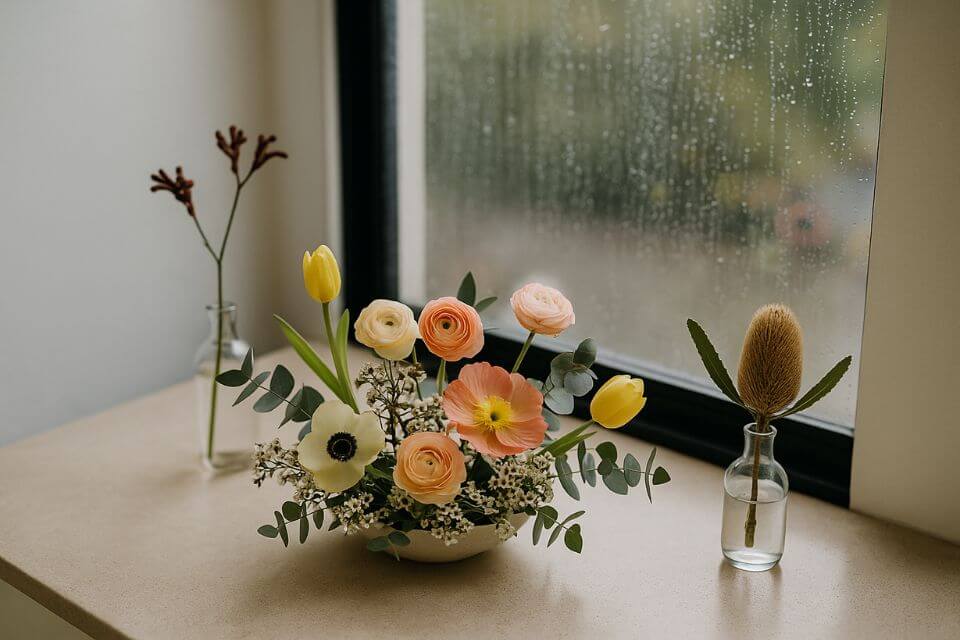Wreaths have adorned our homes, celebrations, and ceremonies in one form or another for centuries and today serve a new purpose as contemporary art forms that invoke ancient symbolism. Today, wreaths are regarded as holiday ornaments, decorations for special occasions and expressions of emotions like sadness, when a wreath is used to decorate or honour any departure from our lives or to pay tribute to a loved one. In this article, we will look at the history, significance, and contemporary evolution of wreaths, as well as practical advice on how to craft your own wreath.
A Look Back: The Ancient History of Wreath Making
The practice of wreath making is not new. The tradition of wreath-making goes back thousands of years. The use of wreaths in ancient civilizations was less about decoration, and more about symbolism. They were most made of laurel leaf and worn as a crown on the head of a winner or champion, and thus as a crown on the head of a winner or champion, such as in the original Olympic Games. Wreaths were also used to symbolize a soldier's accomplishments in warfare, ornamental accomplishments of high officials, the repeated symbolism of victory and honour.
Interesting to note when we consider the word "wreath", it is derived from an Old English word, "writhan" which means twist or bind. When we consider the word 'wreath', we must think in terms of all the materials used to form the wreath as a circular object. Beyond Europe, wreath-like ornaments were also used by early cultures in the world which spoke in symbols signifying the cycle of life and seasons, religious dedication, or respect for the dead.

The Symbolism of the Circle: Continuation, Life, and Peace
The tangible circularness of a wreath, an unbroken continuous shape, gives it further significance making it useful as objects of ceremony marking beginnings and endings. For many, a wreath attached or suspended in space, becomes a symbol of continuity and cyclical nature of life — the change in seasons, death, gives way to new life, and time is always in motion. Wreaths are also often identified as symbols of peace, especially when in the form of olive branches. Olive branches have long held significance as a symbol of harmony and reconciliation since antiquity.
Religious significance is also an important factor. In Christianity, Advent wreaths are a popular decoration throughout the Christmas season. The evergreens in the wreaths represent eternal life and everlasting hope. Advent wreaths are used for the four Sundays leading to Christmas and have candles in the wreath that represent each of the Sundays. Finally, the advent wreath beautifully symbolizes a juxtaposition between worship and tradition.
Wreaths Through the Seasons: Holidays and Celebrations
While wreaths are now, more than ever, associated with numerous holidays, wreaths can be enjoyed year-round. Here are some examples of the best seasonal and occasion wreaths.
Christmas Wreaths
Christmas wreaths are perhaps the best-known conception of wreaths. Typically, Christmas wreaths consist of evergreens, holly, red ribbon, and pinecones. They are intended to be hung on your front door as a welcoming gesture to visitors during the Christmas season and symbolize hope, joy, and goodwill. Christmas wreaths may have ornaments, bells or simply reflect a colour theme consistent with personal decorations.
Spring & Easter Wreaths
Spring wreaths should express renewal and new beginnings, as supported by seasonal fresh blooming flowers including daffodils and tulips, while incorporating the conventional colours, items, and themes of spring typically decorated in pastel ribbons. A brightly decorated spring wreath is often a representation of Easter Spring joy delivering a sense of refreshment, life and energy after the bleak winter months.
Fall Wreaths
With the changing colours of leaves and cooling air, fall wreaths typically include natural arrangements of dried leaves, berries, tiny pumpkins and twigs. The earthy designs reflect the warm hues of Fall and are a frequently decorated item around Thanksgiving or during Harvest Festivals.
Wedding and Event Wreaths
Wreaths can serve as tasteful design element during weddings or other events, representing love and union. Wreaths can be made with floral arrangements relating the theme of the couple on their wedding day, and have multiple uses as centrepieces, displays at the altar or can even be hung on the backs of the couple’s chairs during the reception.

Wreaths of Remembrance- Celebrating a Life
Wreaths have a very important function in a funeral or special memorial. Funeral Wreaths are made with funeral flowers including but not limited to; lilies, roses or assistance, that are placed on gravesites or presented during ceremonies to show care and sympathy. Wreaths represent respect for deceased loved ones, and who they have left behind, while wrapping hope for eternal peace for the family & friends.
One example of a wreath is a "poppy wreath". Poppy wreaths are used to decorate war memorials on Remembrance Day (November 11th) to acknowledge fallen soldiers. This tradition started shortly after the 1st World War relating to Lieutenant Colonel John McCrae's poem "In Flanders Fields", who mentions the poppies growing on the graves of fallen soldiers. Poppy wreaths have now become symbolic wreaths of remembrance and personal sacrifice.
Modern Developments: Beyond the traditional wreath
Wreath making has had somewhat of a creative Renaissance within the last number of years. Wreaths have come a long way since being limited in form (from holiday "wreaths" associated with other special days of the year). Individuals are more contemporary in spirit, no longer required, or able, to celebrate a formal occasion. They have even expanded their wreath making into their every day - wreath designs are encompassing all sorts of everyday knick-knacks to whimsically personalize the mood, personality or creativity of the wreath maker behind the wreath. Below are two contemporary wreath trends:
Minimal Wreaths: Minimal wreaths are simple & understated designs of wreaths with minimal use of greenery, or limited design aspects of a simple design woven around wire or metal hoop forms, and its clean look makes them trendy.
Succulent Wreaths: For all the "succulent lovers"! Succulent wreaths are framed, and created, living wreath of succulent plants that are low-maintenance, and will brighten up, or inject life, to a decor or room. DIY Wreaths: Customized wreaths made with upcycled materials, fabrics or sentimental items are becoming popular as individuals look for new ways to customize their creativity and sustainability.
Year-Round Wreaths: Rather than packing the wreath away and forgetting about it after the holiday, some homeowners choose neutral wreaths with interchangeable elements so they can adapt to the season.
DIY Tips: Make a Wreath
Making your own wreath can be a fulfilling and creative project. Whether you are decorating for a holiday or looking for decor for everyday life, you can create a beautiful wreath in just a few easy steps at home.
Materials Needed
Wreath base (grapevine, wireframe, foam ring)
Floral wire and/or hot glue gun
Greenery (fresh or faux, leaves, herbs, eucalyptus)
Flowers (seasonal flowers, silk flowers)
Decorative things (ribbon, ornaments, pinecones)
Step-by-Step
Prepare the Base: If using a grapevine or wire frame, ensure that you have a clean, sturdy base. If using a foam ring, you may want to wrap it with burlap or fabric, so you don't see the exposed foam.
Add Greenery: First, attach the greenery with floral wire or glue to your wreath, trying to evenly distribute them around the wreath base.
Add Flowers: Next, tuck in some flowers (and secure with wire or glue). Mix large blooms with smaller blooms, for balance.
Add Decorative Elements: Finally, add any seasonal or decorative things, such as, berries, ornaments, ribbon, etc.
Finish: Once you have finished, fluff the elements, check the spacing, and then hang your wreath using a wreath hook, or a ribbon.

Wreath Care: Keep Your Creations Fresh
With proper care, you could extend the life of your wreath, especially if you used fresh greenery or flowers. Here are some care tips:
Keep in the Cool: Try to avoid putting fresh wreaths in direct sunlight or near heating sources.
Mist: Lightly mist fresh greenery to preserve moisture.
Store: When not in use, store wreaths in a cool, dry place in some kind of protective bag or box to avoid dust settling on your wreaths.
Conclusion: Wreaths As Artistic & Meaningful Decor
Wreaths are not just decorations; they contain history, symbolism, and feelings. From ancient laurel to modern minimalist designs, wreaths have a lot to say. They adorn our homes, mark our special occasions, and convey some of our most profound feelings.
When we hang a wreath to greet guests, to celebrate a holiday, or honour a loved one, wreaths are part of meaningful traditions and processes of creativity reflecting some of the best cycles of life.
While design trends come and go, wreaths will always remain an artistic form that serves as an opportunity to convey ourselves while hearkening to the roots of our past.
So, whether you choose to buy an already made wreath or get crafty with a DIY project, remember to appreciate the beauty and meaning of wreaths in your space all year long.





